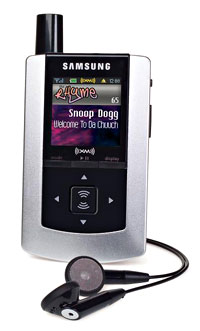1 Billion Downloads for iTunes

February 24, 2006 Thomas Mennecke (http://www.slyck.com/)
Some quick math predicted iTunes’ story well. In one minute, the iTunes' music store sells around 1,400 songs. That’s 84,000 songs per hour, and just over 2 million a day. On Sunday, iTunes’ sales totaled approximately 987,477,000 songs. At 2 million songs every 24 hours, iTunes was expected to hit its magic number of 1 billion songs by the end of this week. Today, iTunes has reached the 1 billion track milestone.
iTunes made its Internet debut for the Mac community in April of 2003. Facing stiff competition from Rhapsody and Napster, Apple launched iTunes for Windows in October.
So much has changed since then. Most notably, Rhapsody and Napster are no longer the stiff competitors they once were. iTunes has taken an overwhelming lead in the authorized music download industry, as it has maintained a commanding 80% market share.
Apple has succeeded where others have remained stagnant largely due to its savvy, if not subversive, marketing. Digital music tracks sold from the iTunes music store are protected with Apple’s proprietary Fairplay DRM. The only MP3 player compatible with this format is the highly fashionable yet functional iPod. Both leaders in their own right, the iPod and iTunes music store have fed each other to market dominance.
The competition, especially Napster, has become increasingly disgruntled with Apple’s lock on the market, and has called on the industry leader to loosen its grip on proprietary formatting. Apple’s lock on Fairplay DRM disallows all other MP3 players from accepting tracks from the iTunes music store. With the iPod the clear leader in the MP3 player market, alternative music stores such as Napster and Rhapsody have been unable to compete effectively.
While iTunes’ competition hasn’t exactly been thrilled with the digital giant, the music labels have also expressed their dissatisfaction as well. Of primary concern is the 99 cent lock that Apple CEO Steve Jobs continues to insist on. Although the record labels do receive a financial majority from each track sold, this has only marginally offset the rapid decline in CD sales witnessed over the last several years (since approximately 1999.) To effectively counter the ongoing decline in sales, the music labels argue, variable pricing must be implemented. Just like any other market in an open economy, higher demand objects should be priced differently than objects of lower demand.
With New York State Attorney General Eliot Spizter’s current investigation into authorized music pricing and accusations of price fixing, the chances of Apple losing its iron grip on the authorized digital market any time soon is unlikely. 1 billion downloads equates to a lot of money, a lot of music and a lot of satisfied customers. Yet it took Apple nearly three years to reach this milestone – a benchmark reached in unauthorized file-sharing communities in less than a week.



